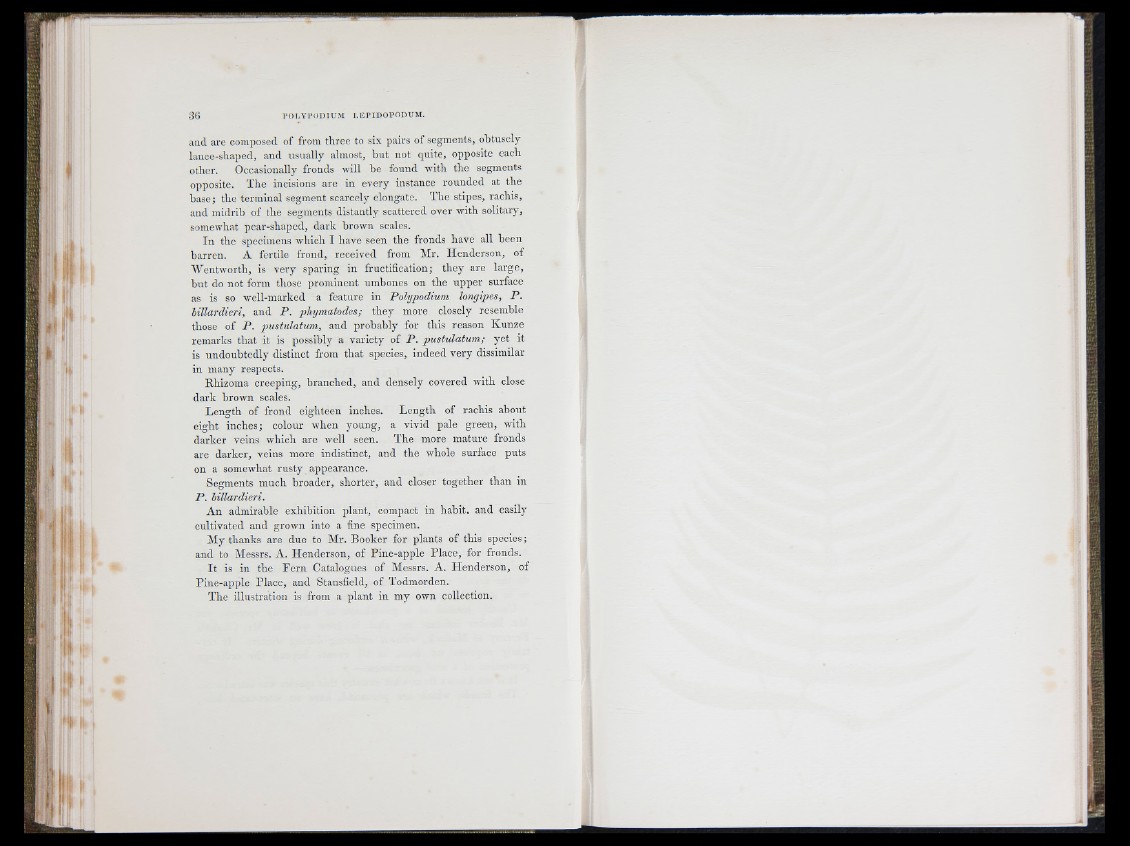
J "■
~ i l 'i* 1'
-V|
l o i
;î(i 1>01, Y P O D IU M L E P ID O P O D U M .
i 1-1 -■
1 Ujl '
J:
y
and are composed of from th re e to six pairs of segments, obtusely
lance-shaped, and usually almost, b u t not q uite, opposite cacb
otber. Occasionally fronds will be found rvitb the segments
opposite. The incisions are in every instance ro u n d ed at the
base; the terminal segment scarcely elongate. T h e stipes, rachis,
and midrib of the segments distantly scattered over with solitary,
somewhat pear-shaped, d a rk brown scales.
In the specimens which I have seen the fronds have all b een
b a rren . A fertile frond, received from Air. lie n d e rso n , of
W en tw o rth , is very spa ring in fructification; th ey are la rg e ,
h u t do not form those prominent umbones on th e u p p e r surface
as is so well-marked a feature in Polypodium longipes, P .
lilla rd ie r i, and P . plixjmatodes; th ey more closely resemble
those of P . p u s tu la tum , and probably for this reason Kunze
remarks th a t it is possibly a variety of P . p u s tu la tum ; y e t it
is undo u b ted ly distinct from th a t species, in d e ed very dissimilar
in many respects.
Rhizoma creeping, b ranched, and densely covered with close
d a rk brown scales.
L en g th of frond eighteen inches. L en g th of rachis about
eig h t inches; colour when young, a viv id pale g re en , with
da rk e r veins which are well seen. T h e more mature fronds
are d a rk e r, veins more indistinct, and the whole surface puts
on a somewhat ru sty appearance.
Segments much bro ad e r, sho rte r, and closer together th an in
P . billardieri.
A n admirable exhibition plant, compact in h ab it, and easily
cultivated and grown into a fine specimen.
Aly thanks are due to Mr. Booker for plants of this spe cies;
and to Alessrs. A. Hen d e rso n , of P ine-apple Pla c e , for fronds.
I t is in the P e rn Catalogues of Alessrs. A. H en d e rso n , of
P ine-apple Place, and Stansfield, of Todmorden.
T h e illustration is from a p lan t in my own collection.
H
d I
P\
I f